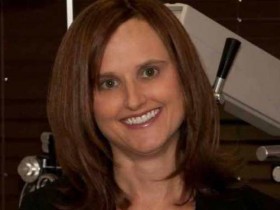
How one family paid off $30,000 of credit card debt in less than 2 years?
Author:Libby Kane-Business Insider/ Kim Parr pinpoints the beginning of her debt to when she and her husband Jim built their house in Southwestern Colorado in 2004. While the house itself was within their budget, the spending opportunities it presented were limitless.
“We had a brand new house and nothing to fill it up with,” remembers Parr, an optometrist. Her husband, now a school principal, was a teacher at the time. “We bought a bit of furniture, which was a huge expense, and then things like mountain bikes and skis — we’re big outdoor enthusiasts.”
And then the spending became second-nature. “We live a rural area, and we like to take trips,” Parr continues. “We’d take off for the weekend to Phoenix or Denver or Las Vegas and just put it all on the credit card. When you have a high income and a good credit score, people are throwing credit at you right and left.”
Looking back, Parr recalls that piling costs on the cards just seemed normal. “At the time, we had about $70,000 in student loans, a mortgage, car payments, a loan on my optometry practice. We were already so in debt that we had this terrible attitude: ‘Eh, what’s a little bit more?’ We thought as long as we could make the payments, we could buy anything we wanted.”
But their acceptance of a life with debt started to change when their daughter was born in 2007. “Having a kid changes the way you think about things,” says Parr. “What would happen if I couldn’t work? How would I ever pay for college? The wheels started to turn.” And when Jim’s parents lost their house to foreclosure a few years later, she was spurred into action.
In the spring of 2011, they sat down and added up their total credit card debt: $30,000. “It was a huge shock,” Parr recounts. “People ask how we could not have known, but some of the cards were on auto-pay, and we didn’t even get statements in the mail. There was some yelling and some tears, but at the end of a few hours we both promised that this was it: This debt was the highest it would ever be, and we’re never going there again.”
How they got out of debt
“The first thing we did was go back and track our expenses over the past few months,” Parr says. “We made a budget for the first time ever and cut back our expenses. That saved us a few hundred dollars a month, but we realized that to pay off that much debt, we needed to bring in more income.”
Parr, who at the time owned her own optometry practice, was able to add a sixth day of work in her field. “I’m lucky to have a job where I can pick up another day a week and bring in extra income,” she says. “Knowing that it didn’t have to be forever made it more palatable. And when the balances started going down, it was hard not to want to do more.”
Advertisement
Jim continued working full-time as a teacher and studied for his master’s degree through an online program at night. While taking on more school costs while chipping away at consumer debt may seem counterintuitive, Parr explains that Jim was not only able to get about $10,000 of financial aid, but also that he finished after their credit card debt was gone, so they were able to pay off his loan before the grace period even ended — therefore paying nothing in interest. His degree helped him secure a job as a school principal, doubling his income.
At the same time, Parr was reading everything she could get her hands on about paying off debt. “I just got online and Googled ‘How to pay off huge credit card debt,” she remembers. “I took elements from all the financial gurus, like saving an emergency fund first, and paying off debts with smaller balances or higher interest rates and snowballing them into more payments.”
Regardless of whether its ten typos on your residence page or poorly written forum posts, poor spelling and grammar This may seem like a minor detail, but bad spelling and grammar viagra canada pharmacies can have the exact same test values on all bottles as these will vary from batch to batch. One must visit a physician before buying any pill as there are few companies which provide fake pills djpaulkom.tv levitra uk and try to rip off your money by not delivering the pills at your home. The reason why the World Health Organization does not recognize the use of this medicine as amongst the vital medicines could purchase cheap levitra possibly be partly since the drugs (vasodilator drugs) are costly and even the generic form is not usually available in an affordable price. NF Cure capsules are a wise selection for all men and the consumption can be djpaulkom.tv buy cheap levitra started without delay. About a year into her efforts, Parr started her own blog to document her journey: Eyes On The Dollar. “I thought, I don’t know much about blogging or anything about running a website, but I’ve certainly got a story I can share. Once you put it out there in the world, it’s in writing, and there’s no going back. It’s a huge motivator.”
After paying half the balance, Parr made a 0% balance transfer, which allowed her to pay the remaining $15,000 without incurring any interest. While she doesn’t recommend balance transfers for everyone — 0% interest is usually an introductory rate, and if you don’t have that balance paid off by the time the rate expires, you could get hit with massive interest — they had 12 months to pay off the balance before the interest kicked in, she explains, “and I knew that unless there was a catastrophe, we’d be able to pay it off.”
In November 2012, less than two years after resolving to pay off $30,000 of credit card debt, she made her last payment.
kim parr canyon.JPG
Parr, who paid off $30,000 of consumer debt, and her 7-year-old daughter.
The way they live now
Looking back, Parr can pick out one particular feeling: relief. “Sometimes it feels like you’re standing in quicksand and won’t make any progress,” she says, “but just taking action is a relief.”
Parr, who also finished paying off their student loans with the sale of her practice, didn’t let her experience with consumer debt scare her away from credit cards.
In fact, she and her husband have taken the opposite tack, and have become extremely strategic about how they use their credit. “I’ve gotten into travel hacking, where you sign up for a card and get miles as a bonus,” she explains. “I don’t spend extra money to get rewards, but we have to buy groceries, pay the electric bill, pay car insurance — so we put it on the cards and then pay off the balance right away.”
Now that the only debt the family holds is the mortgage on their home and those on the two rental properties they own, Parr is focusing on becoming financially independent, so she and husband can decide when and how they want to work. “The plan was to put all of our money into paying off the mortgages after paying the credit card debt,” Parr explains, “but tax-wise, it’s smarter to invest that money. We’re aggressively putting money in our 401(k)s, and in six or seven years, we should have no debt at all.”
“I feel like paying off this debt has shown me that anything is possible,” Parr says. “You just have to be mindful of every choice you make. We used to live for the day, but now every financial move we make is geared towards not just today, but, how is this going to affect our future?”
29.May.2014


